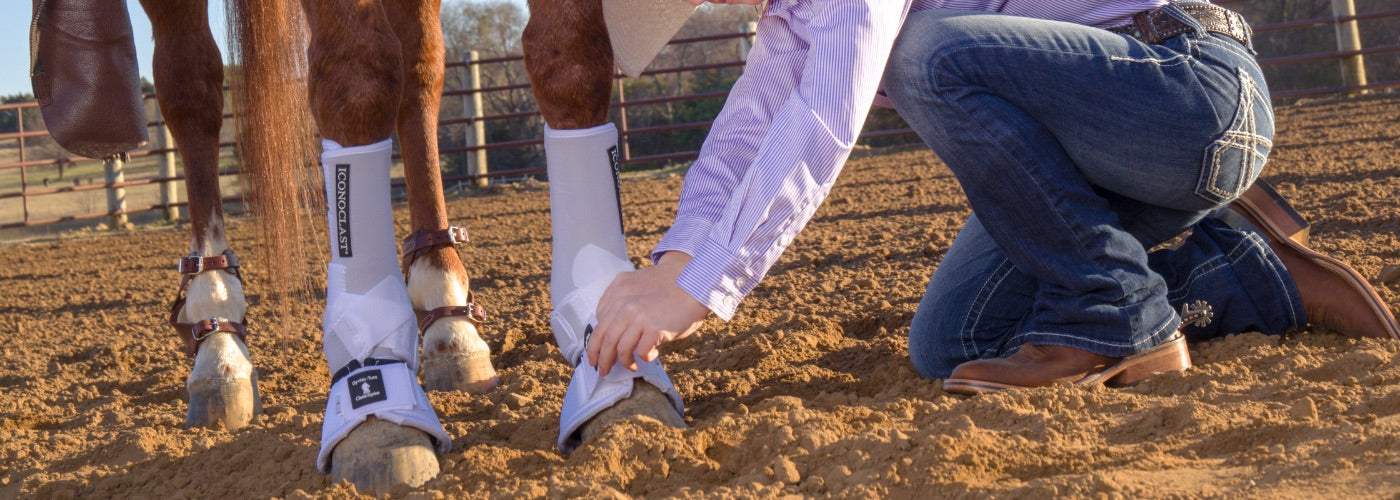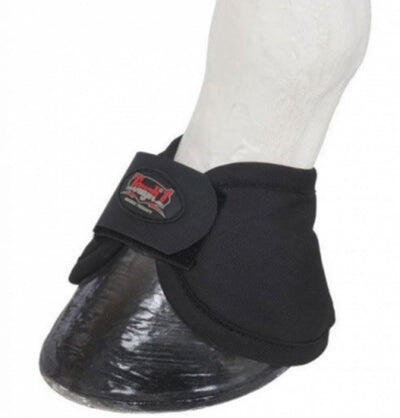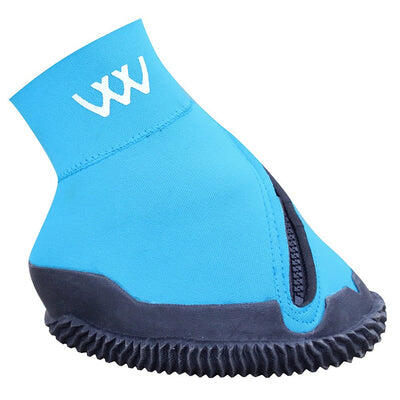
A Guide to the Different Types of Horse Boots
There are many different types of horse boots, and having the proper kinds for the right issues is an important step in avoiding preventable injuries and helping your horse stay healthy. This guide will explain some of the most common types of horse boots, including versatile bell boots, so you can make the best choice for you and your equine partner.
Why Do Horses Wear Boots?
Horses mostly wear boots for protection. When it's time to tack up, you don't want to worry about injuries. Booting can protect your horse and help ensure a long and comfortable life.
There are many different types of horse boots available, and choosing the correct ones can be a bit overwhelming. The types of horse boots that you need depends on how you ride your horse, if they are competing, whether or not they wear shoes, if they are being trailered and other factors, such as the animal's conformation.
The proper boots allow you to worry less and ride more. While boots can't guarantee that your horse won't get hurt, a little prevention goes a long way in avoiding unnecessary injuries.

What Are the Different Types of Horse Boots?
There are many different types of horse boots, each one with a specific purpose. Picking the right boots starts with knowing what you need them for. Here are some of the more common types of horse boots that you should consider including in your tack.
Stable Boots
When horses are immediately stabled after a ride instead of being allowed to walk around a bit, their legs may swell due to fluid retention. Stable boots reduce the chances of post-workout swelling by providing warmth and support.
Fly Boots
Horses can get rid of flies on their body easily with a swish of the tail or a muscle twitch, but stomping is their main defense against flies on their legs. While stomping might deter pesky flies, it can cause sore feet, bruising or, in extreme cases, lameness. Fly boots protect the legs from bothersome flies and prevent repeated stomping.
Splint Boots
These boots are made for working! Splint boots are also known as brush boots, sport boots or support boots. They prevent the horse from hitting itself during hard work and protect the legs from impact injuries, much like shin pads. Splint boots are commonly used during lunging, jumping, reining and other fast-moving activities.
Shipping Boots
Shipping boots are only used for travel. They extend from the ground to the level of the knee/hock or above and prevent bumps and bruises when trailering.
Bell Boots
Bell boots are small, versatile, cup-shaped boots that fit around the pastern and over the hoof. Bell boots are also known as over-reach boots for horses.
What Are Bell Boots for Horses Used For?
So, now you know what bell boots are, but what are bell boots used for, and why do horses wear bell boots?
The primary bell boots purpose is to protect a horse from over-reaching. Over-reach means that the horse has a tendency to step on its own feet due to a faulty gait caused by a timing issue with the movement of the front and back legs.If you notice scuffs, scrapes or bruises on your horse's heel pads or pasterns after riding, or they tend to lose shoes when frolicing outdoors, they may benefit from wearing bell boots.
Bell boots protect the heel and prevent the hind feet from accidentally knocking off the front shoes. Bell boots, A.K.A. over-reach boots for horses, prevent injury to the hoof and hairline. They are designed to protect a horse’s coronary band from injury which can cause permanent damage to their hoof.
Over-reaching can cause injuries when the delicate heel bulbs of the front feet are clipped. They can also reduce shoe pulling by preventing the hind feet striking the backs of the front shoes and loosening or pulling them off. Bell boots sit around a horse’s ankle area and stretch to the ground to help shoes stay on, especially during lungeing or heavy riding.
In fact, there are many reasons why you should add them to your tack collection. Another purpose of over-reach boots for horses is to provide an additional layer of protection during trailering if shipping bandages don't adequately cover the pasterns or heels.
If your horse has a tendency to over-reach or pull shoes, bell boots are a cost-effective and easy way to avoid self-inflicted injuries.

Tack Up for Safety and Style at NRS With Functional and Fashionable Bell Boots
At NRS, we have all the essential types of horse boots, including bell boots, to protect your horse and make sure they are always ready for the ride. Whether you are looking for sturdy rubber, fashion colors or no-turn styles, our bell boots safeguard your steed in style. We carry the equine products you need at prices you can afford.
Shop Bell Boots Today



